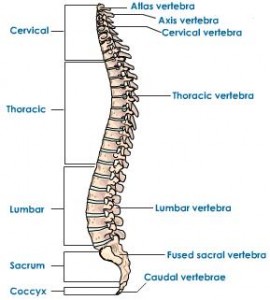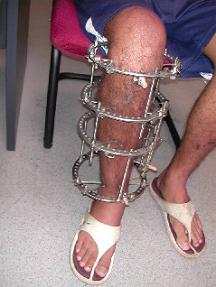Something that I read from a recent post was that the weight loss industry apparently is currently around $66 Billion dollars for the 2012-2013 year. Based on a post from FoodEducate.com there is supposed to be around 75 million people who spend on average $800 a year trying to lose weight.
That is a lot of money spent trying to accomplish something which most people can accomplish with even the slightest bit of commitment, dedication, and discipline. So I wanted to ask a similar question about this ‘industry’, if we can even call it that.
How big would the grow taller industry be worth if there was a non-invasive method, specifically targeted for adults with fused growth plates?
Many people on the grow taller forums claim that is would be in the trillions, and that if someone could license the invention and hold onto that type of intellectual property or secret, they would become very rich. I sort of agree, but just how much could the inventor of this non-invasive method be making?
There are currently about 7 billion people in the world. Exactly half of those people in the world are below average in height. This is true for men, and women, Europeans, Asians, Africans, etc. That is how a height distribution bell curve works out.
Of those people who are below average, how many of them would like or secretly wish to become taller? I would say that maybe 70% of those people would pay for a solution, if it meant that it didn’t involve too many steps, too much pain, and too much time taken from away their normal lives.
What these people who are only semi-interested in a solution, they want something easy, like a ‘grow taller miracle pill‘ which does not exist, at least for people who have complete bone maturity. They would probably only make the effort to drive to a drug store like CVS and go up the aisle and pick it up. They would prefer that this miracle pill would not require a prescription but over the counter.
A small percentage of people would be willing to spend some time each day doing the type of stretching exercises needed to gain a slight bit of height increase. Most people are just lazy, and that is okay. Humans are lazy creatures because it is hard to expend energy. If we could, we would want to get what we want, immediately, with no effort, time, or energy spent.
Trying to grow taller is about 10,000X harder than losing weight, if not impossible for certain people after a certain age. The main reason is because they lack the resources or desire to go through with it.
The best orthopedic surgeon who does limb lengthening surgery in the USA is probably Dr. Dror Paley, who has done hundred of these types of surgeries. The next best surgeon is probably Dr. Betz based in Germany. You can read about the journals of people who went through the surgeries from the forum Make Me Taller.
The average cost for grow taller surgery which is called distraction osteogenesis will cost around $50,000-$100,000 for the best surgeons who specialize in this type of surgery. There are probably less than 100 people in the world who are certified and have the skills to do this type of job. There are indeed cheaper doctors who do the height increase surgery, like Dr. Xia based in China for only around $25,000 total but that is still quite a lot of money for most people, and we are just talking about people who wish to become taller in the developed nations, which have a higher living standard.
$50,000 is what the average US household makes. I would guess that people like Paley and Dror would charge about the same price for one surgery procedure of the same price, $50,000. If one the surgeon just performed one of these surgeons everyday for a year , which takes around 2-4 hours each, they would have an income stream of slightly over $18,000,000 dollars. Take into account the medical secretaries, the clinic costs, the anesthesiologists, nurses, and maybe 1-2 other surgeons, and you would still be coming out with around $5,000,000 every year. Of course these dollars will not, and can not perform on a new patient every single day. They would eventually become burnt out. I personally would guess that these surgeons are making closer to around $1,000,000 a year, after taking into account HMOs, other types of medical insurance, paying off their medical staff and other doctors, facility costs, etc.
If there are around 100 people in the world who are doing this, this means that there is already around $100,000,000 of cash flow occurring every year on just this most extreme method of grow taller method. If there was a much easier way to do it, how many more people are going to start trying it out.
I have received emails from people who have told me that they have contemplated suicide because they are so unhappy with their height. They just can’t imagine living the rest of their life at the height which they are supposed to be stuck in. Seeing multiple therapists don’t seem to help, since this aspect of who we are, what our identity is, is set in stone, something that can’t be changed.
If you, or we manage to find a solution, we would be like the answer to million’s of people’s secret wish. There are thousands of people in the world right now who would pay upwards of even $100,000 to go through with the limb lengthening surgery. Millions more want to become taller just as much but they are not willing to accept the surgery approach.
I would guess that probably 50% of any population desires at some level to be taller than they are currently. The fact that everyone in my own personal family have stated it may mean that my family is either extremely unusual bunch of people with some type of height fetish, or they represent somewhat of the average viewpoint on this subject. Most people after they stop growing and become adults, they stop worrying about this issue. They move on to worry about something else, which is usually money.
If we assume that maybe the highest amount of money anyone would ever decide to pay a single miracle pill to allow them to end up taller is around $200, that means that from one supplier alone, they would be about $700 Billion Dollars worth of financial transactions. Of course this is just for a year’s worth of revenue alone. If this was a single company, and the company’s net worth was considered, it would be around $7-12 Trillion. There has never been a publicly traded company worth even $1 Trillion.
In addition, it won’t be the people who are below average who will wish to use the technology. The moment people who used to be taller realize that their shorter peers have now the way to become bigger than them, they will jump on the bandwagon as well. It will turn into a sort of arms race to see who will end up taller due to social competition to flaunt one’s physical qualities. I remember the quote by Al Pacino in the movie “The Devil’s Advocate”. “Vanity, definitely my favorite sin”
What is my point?
If you as a researcher can figure out this problem, and find a real solution, even a slight improvement on the way we make people taller these days, one will definitely become a multi-millionaire, or even a billionaire if they license their technology correctly to the right groups of people.
If one can make a quantum leap on what is currently being done by orthopedic surgeons to lengthen bone, they will become one of the world’s first trillioniare, based on rough calculations. (That 1st trillionaire title seems to have gone to Mr. Kamal Ashnawi) Maybe I should have named this post “Who is the world’s first trillionaire?”
This is the reason I suspected Sky from EasyHeight.com wanted to try to figure it out. Why should a below average in height vietnamese guy settle for a low 6 figure job as a pharmacist when they can potentially become a billionaire by finding something similar to the “elixer of life”. Plus, he would figure out how to make himself bigger, and help make a huge contribution to the world which no one would ever forget even generations later. This is similar to Steve Job’s comment on desiring to make a dent in the Universe. If you succeed, you are going to make just as big of an influence on millions and billions of people’s lives in the future as long as the human race exists.
I don’t do this research for the money, because there is no money for amateur researchers like me and Tyler. There are some Google Adsense Ads and Amazon Affiliate Links lying around so that I would earn just enough to pay for all of the website service costs. You might be surprised to learn that although this website gets thousands of unique visitors a day we earn almost nothing. When I say that it is pennies a day, I do mean pennies a day.
People just don’t believe this idea is possible, until they see it with their own eyes or hear enough other people claim that it is true. It is absolutely critical that when it comes to anything related to this endeavor, people have to be sceptical of the claims being made.
However the problem and how to solve it has become clear to me now. I know what exactly I should be looking for. I finally have figured out what I should be looking for in terms of the research. When the breakthrough research does appear, I will be able to connect the dots. I will propose the exact answer, but I am not sure if I can find the right type of investors who would invest in the lab supplies and experiments to prove this idea of mine works. To have an idea on just how hard it is to get a pharmaceutical drug out to market, and how much it would cost, take a look at this article by Eli Lilly
Side Note: I am reminded of a Senior Design Chemical Engineering Course I took back in my undergraduate days. The lecturer stated that based on just how much sulfuric acid (H2SO4) is used in almost all chemical processes to make the raw materials to power any society’s unsatiable hunger for consumer products, if any chemical engineering student could figure out a slight modification on the process to make sulfuric acid itself in large quantities with relative ease, by as much as just 0.1%, and licensed that patent they have intelligently, they would become a multi-millionaire with royalties coming in by the millions every month.






